Fitz Roy Tehuelche route rare repeat by Slovenians Urban Azman and Boris Lorencic

 1 / 13
1 / 13 Boris Lorencic
Boris Lorencic
In January 2009 two Slovenian Mountain Guides, Urban Azman and Boris Lorencic, carried out a rare repeat of Via del Tehuelche up the N Face of Fitz Roy, Patagonia. The route had been first ascended using fixed ropes by Marco Sterni and his Italian team in 1986 but they were forced to turn back 100m short of the summit due to fierce winds on the final ridge. The formidable 1300m line, named after the original Indian inhabitants of Patagonia, was first summited a decade later by Rolando Garibotti and Doug Byerly in a two-day alpine style ascent. Urban Azman and Boris Lorencic climbed on 12 and 13 January and they are now only the second team to reach the summit via the entire route.
Shortly before returning home the Slovenians made the best of a weather window to repeat Fonrouge - Comesana on Aguja Guillaumet and, importantly, they took part in a complicated operation to rescue a Columbian climber off Torre de la Media Luna. Lorencic' thoughts about this episode in particular are worth reading and reflecting about.
Via del Tehuelche, Fitz Roy
On January 10 the weather forecast predicted fine conditions for two days so we gathered our equipment and left the comfort of El Chalten - the Argentinian Chamonix - for the saddle of Del Cuadrado where we made camp.
We started climbing at 7am up the easy entry cracks toward the massive ledge known as "Grand Hotel" about one third height up the wall. Our progress was slow as the cracks were well-iced and occasionally hidden by snow. Eight hours later we reached Grand Hotel where we broke for an hour of rest.
Above Grand Hotel, the Diedro de Marco loomed perilously above – 50 meters of off-width crack – the key to the route, the crux pitch. Urban led this and fortified his effort of artful thrutching with colourful language and only a Camelot 6 for protection. The pitch exacted considerable energy from us that made the following, verglassed pitches more serious than they ought to have been.
By 2am we had climbed five pitches, about 300m and were exhausted. We rested 4 hours until dawn before summoning our reserves and making another effort. Sleep was fitful and marked by extreme discomfort, Urban managed to squat on a pedestal ledge whilst I dangled above the abyss in my harness. We were aware of our bodies reduced to numb cold marginally thawed by the typical tingling in the hips and debilitating foot cramps.
6am sunrise and we were climbing again, relieved to be moving after the hours of painful rest. As with the lower pitches the cracks were packed with ice and the edges and breaks covered with treacherous verglass forcing us to aid climb (A2) any sequence harder than French 6a. As the sun climbed the sky so we were exposed to greater ice fall and large slabs of ice broke free and slipped passed us into the void. The aiding really slowed our pace and as we made our way up the face we began to fear the merciless Patagonian weather as tell-tale storms strung in from the Hielo Continental Glacier – the "Patagonian Cassandra for bad weather and uncomfortable times".
But the weather held and 10 hours later the climbing eased and we were at last able to place some reliable protection and rest on comfortable stances. The respite did not last long before we were on the last 5, difficult pitches. As usual the cracks and breaks were iced making gear placement near impossible. As I led up the 1st pitch, emboldened by being so close to achieving our goal, I pulled up on a flake that broke without a sound from the wall and I fell 10m, flake still in hands. The last of the 5 hard pitches was climbed in the dark.
After the last pitch we were expecting an easy grade 4 exit to the summit - however we were shocked to encounter an ice wall. Without ice tools we were stumped for options. Trying to find an alternative exit we stumbled upon an "airshaft" – a miraculous find. This chimney led to easier ground – easier than the pitches beforehand but harder than the route description we had; harder than we wanted at 2am; like the wall would not give up until we had conquered the summit.
We topped out at 3am – 34 pitches in total – and after a brief pause for some photos we started the long descent as the snow began falling softly. The abseil to the glacier and safety took 8 long hours. We were forced to abandon one of the ropes as it got stuck when being pulled. By late morning we were on the glacier. From there we descended over a Passo Guillaumet to the tent. That same evening we were back in El Chalten, safely back at the Lago del Desierto hostel where we celebrated our climb.
We stayed in El Chalten for another month – enjoying the beautiful scenery and rebuilding our strength with decent food. Inclement weather precluded us enjoying the local cragging and bouldering around El Chalten – however with 2 days before flying home a break in the weather allowed us to climb the Fonrouge – Comesana route in Ag. Guillaumet.
El Chalten is a beautiful location offering immense opportunities to the aspiring alpinist. Fitness is essential – this is not a place for the under-trained or the part time climber.
Shortly before our departure from El Chalten a Columbian climber broke his leg above the Norwegian bivouac, just below the Torre de la Media Luna. A rescue party was cobbled together from the climbers at El Chalten. Disappointingly, of 100 climbers camped at El Chalten only 10 volunteered to participate in the rescue. I’d like to use this opportunity and knock on the conscience of all those who think they are self-sufficient in the mountains. You are not and we are not! This is unfortunately most apparent when an accident occurs. In countries where there is organised mountain rescue services the procedures are known and well rehearsed. Where this type of organisation is not present however, we all depend on each other. But when one of our fellow climbers is injured - especially in remote locations – our accomplishments on the walls and our fantastic ascents loose all meaning - what counts is only the number of hands that are available and willing to help the injured party. Each hand is much-needed, especially if the rescue is arduous and takes place in complex terrain like that with the Columbian. Fellow mountaineers, arrogance and indifference does not help, only too soon one of us, one of you, will need the assistance of someone else, some stranger on the mountain, to help you climb another day, to live another day. Think about it…. Good luck!
Boris Lorencic - Slovenia
Via del Tehuelche
Fitz Roy, 3375m, North Face
First ascent: Carlo Barbolini, Massimo Bonsi, Mauro Petronio, Angelo Pozzi, Mauro Rontini, Marco Sterni, 1986
Details: 1300m, 6b + / A2
Repeat: 12 - 13/01/2009, 44 hours
Fonrouge - Comesana
Aguja Guillaumet, 2579 m, NW crest
Details: 600m, 5 + / A1
Repeat: 31.01.2009, 4 hours
2006 ascents Urban Azman and Boris Lorencic
El Mocho: Benitiers, 500m, 6b, A1, 4 hours
Ag. Saint Exupery: Claro de Luna, 800m, 6c, 7 hours
Fitz Roy: Slovak route, 2400m, 6b+, A1
| Links Planetmountain | |
| News Fitz Roy | |
| News Patagonia | |
| Trekking in Patagonia | |



 Copia link
Copia link

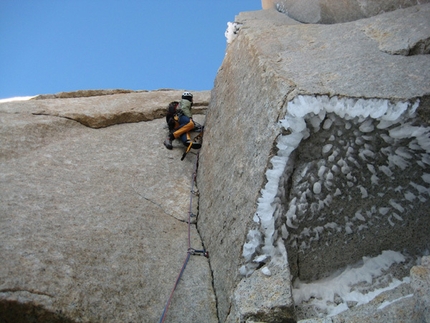


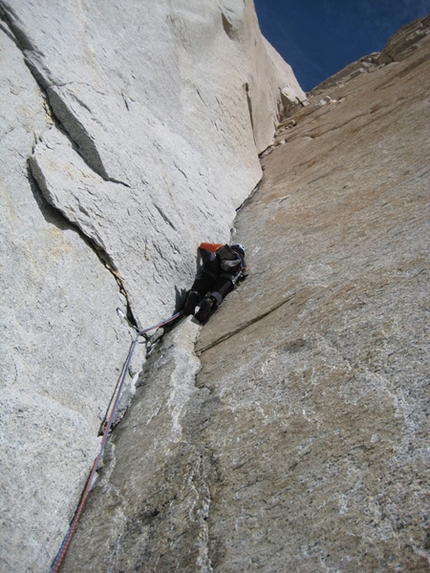
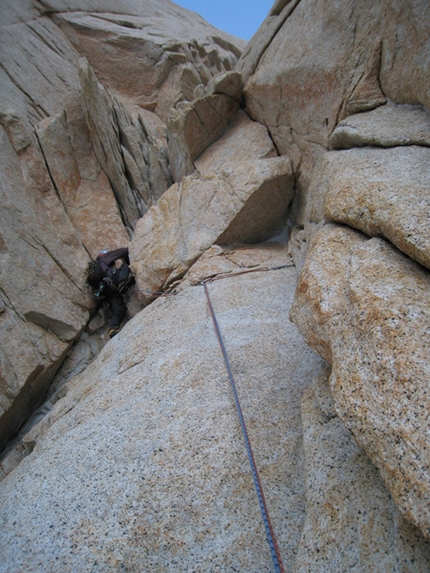
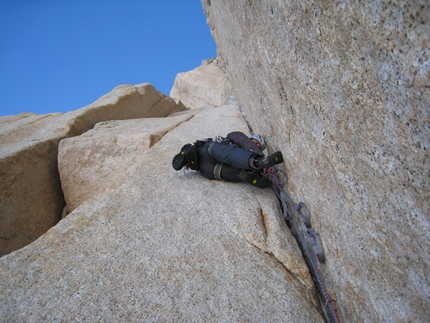
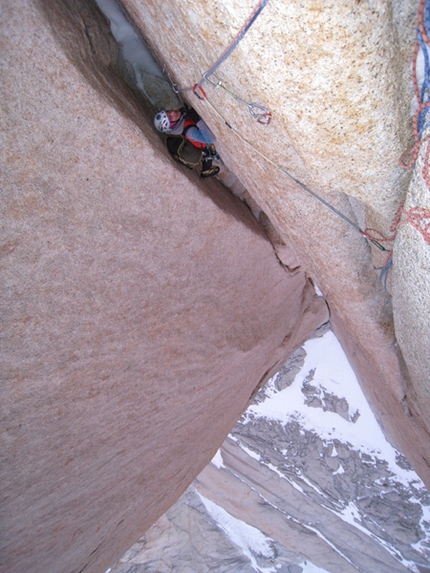
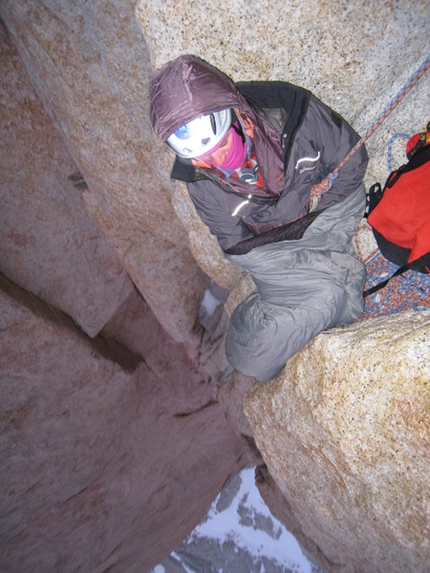
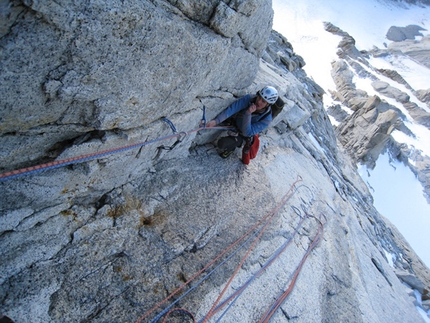
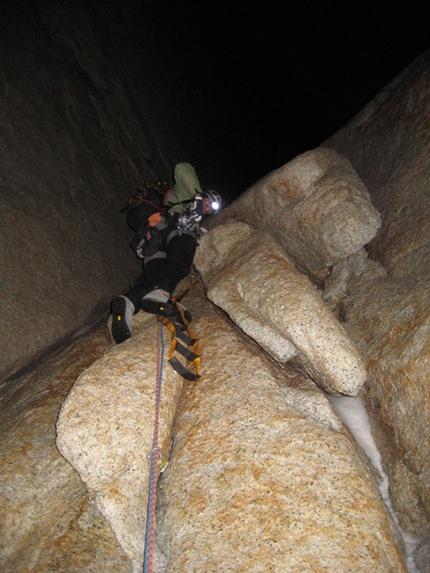
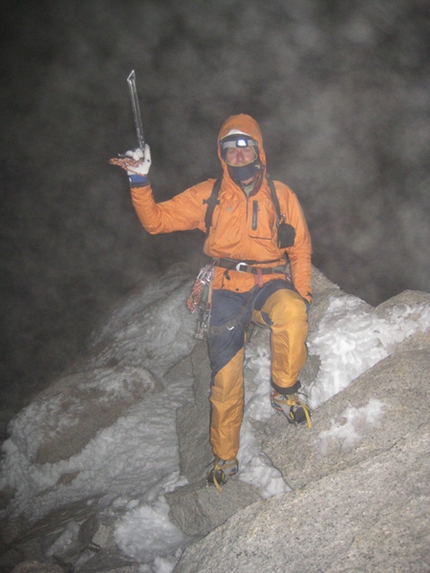
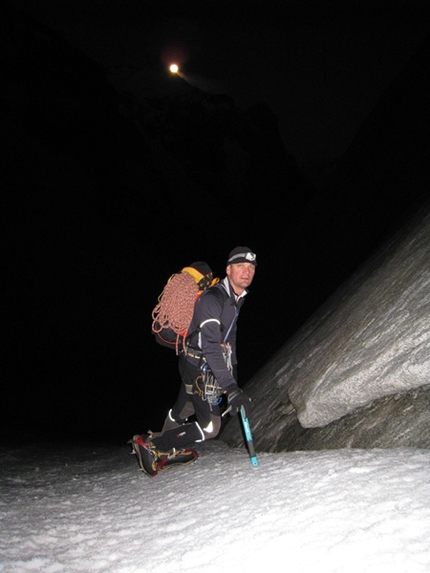
 See all photos
See all photos






















